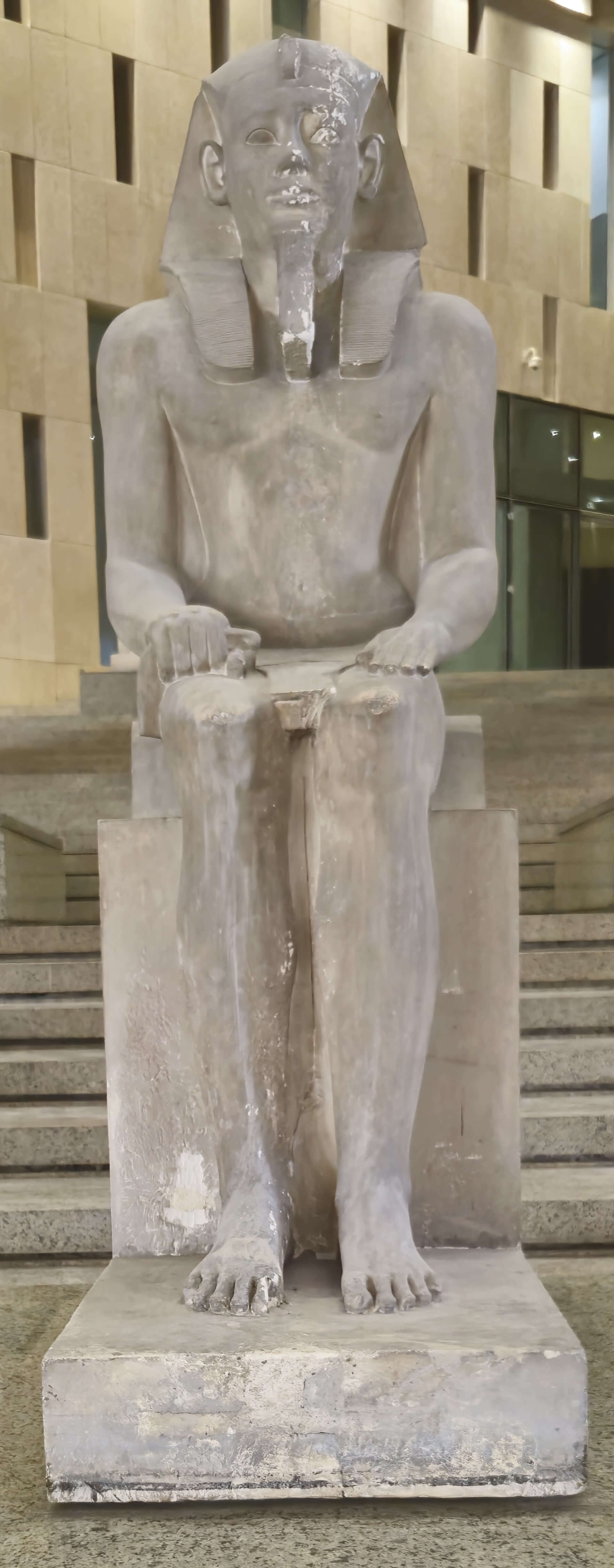
GEM 6758
King Senwosret I
In a compelling visual scene carved on five statues from the pyramid complex of King Senwosret I at Lisht, two of Egypt’s most famous and contrasting deities—Horus and Seth—are shown in harmony, jointly binding plants around the Sema-Tawy symbol, which represents the unification of Upper and Lower Egypt. This imagery was not only political but also profoundly symbolic, representing a divine endorsement of royal power and national unity.
Horus, the falcon-headed god, was traditionally seen as the protector of kingship and order. He symbolized divine legitimacy, closely associated with Pharaohs from the earliest dynasties. His presence in the Sema-Tawy ritual affirmed the ruler’s sacred right to the throne and echoed a lineage stretching back to the mythical era of divine kings.
Seth (or Set), in contrast, is a far more complex figure. Often linked to chaos, storms, and the desert, Seth played the role of Horus’s rival in the famous myth of the Contendings of Horus and Seth—a divine struggle for the throne after the ... Entdecken Sie mehr mit Premium!
Entsperren Sie die vollständige Geschichte dieses ArtefaktsWerden Sie Premium-Mitglied, um auf die vollständige Beschreibung, Audioguides und exklusive Inhalte aller Artefakte zuzugreifen.Erhalten Sie vollen Zugriff auf Audio und Beschreibung der wichtigsten Artefakte des GEM für nur 1,99 $
Suchen Sie ein weiteres Artefakt?